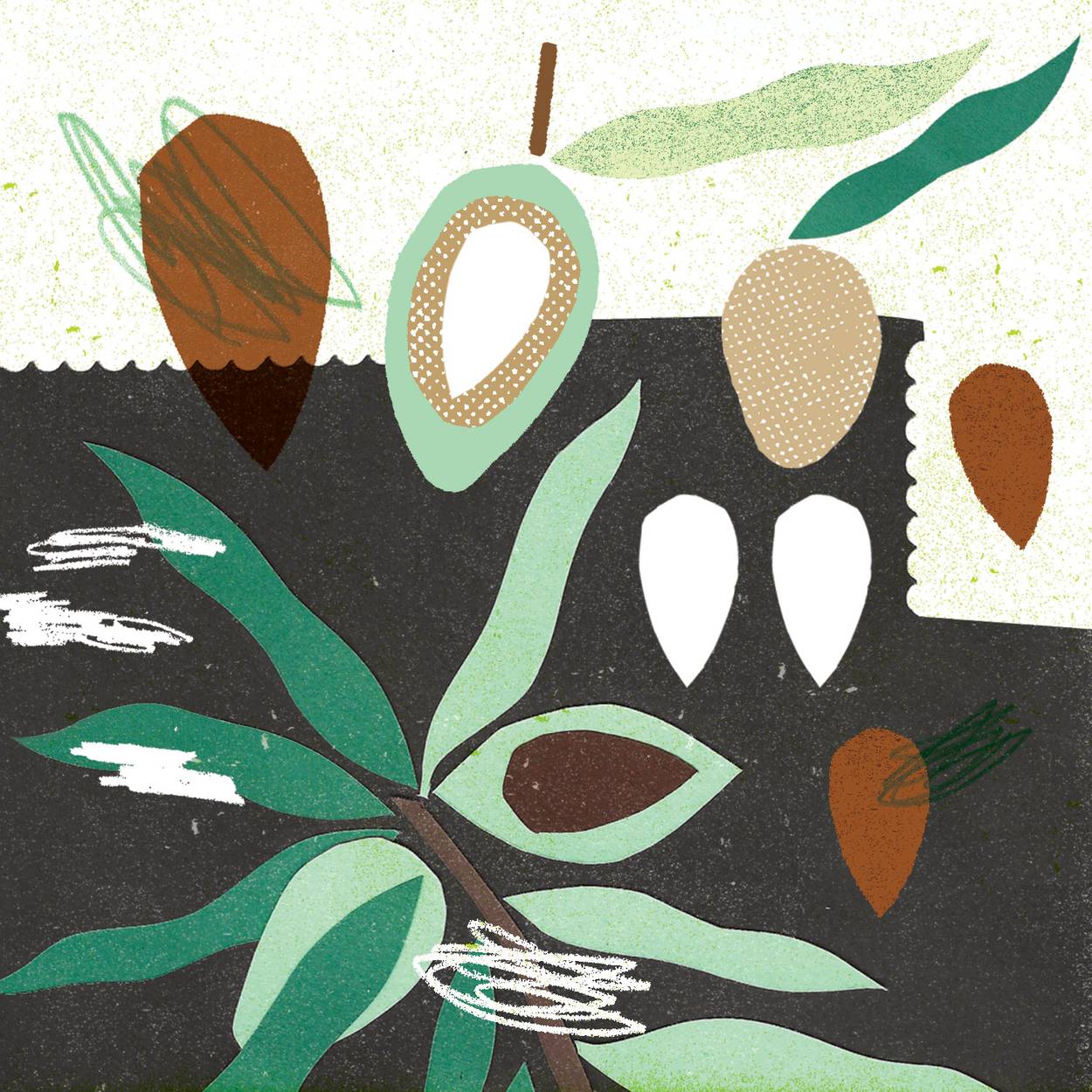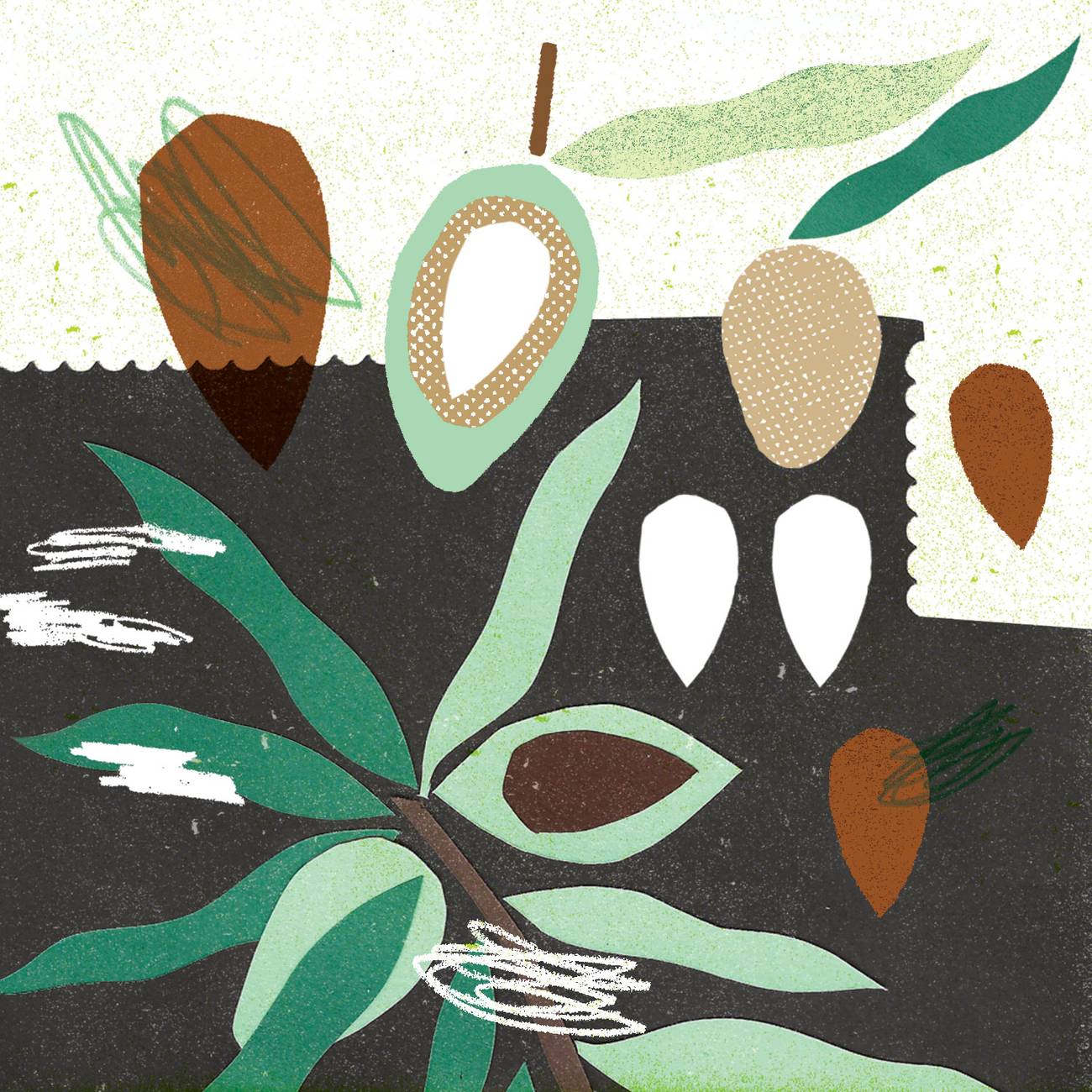Sometimes You Feel Like a Nut
Almonds have been beloved since biblical times, and continue to be popular in Jewish kitchens around the world




The almond has been enjoyed around the Mediterranean and Middle East since prehistoric times. It was much loved by the ancient Hebrews, who called it shaked—the “awakened one”—because it was the first tree to come into flower at the start of the year. In the Bible, the almond is referred to as a symbol of the impermanent nature of life, as well as a representation of hope and renewal. In Genesis, almonds are considered one of “the best products of the land” (of Israel), which is why Jacob recommended that his sons take a gift of almonds, pistachios, honey, spices, and myrrh, to Egypt to soften up his potential enemy, the governor (who was—spoiler alert—Jacob’s long-lost son Joseph). It’s not the last time the almond made an impression on Jewish history: The almond blossom was used as a model for the seven-branched menorah that stood in the Holy Temple in Jerusalem.
A native of Iran, the Levant, and the Mediterranean, the almond tree has often been dubbed the “Tree of Life.” The ancient Greeks used almonds to interpret dreams: They believed that if sweet almonds appeared in your dreams, there would be some travel in your future that would bring good fortune; on the other hand, if you dreamed of bitter almonds, the journey would have a bad outcome. The Romans considered the almond a symbol of fertility, happiness, romance, good health, and fortune, unlike the Chinese, who deemed it a symbol of sadness, as well as female beauty.
During the Renaissance the almond was a luxury and a status symbol that was highly prized by royalty and the upper classes. Almonds were used in both sweet and savory sauces and desserts, especially blancmange and marzipan, while almond milk was often used to make soups—especially during Lent, when dairy products were forbidden. Almond milk was also given to invalids to aid their recovery. It was also thought to be nourishment for the soul. Almond oil was often used as a condiment for meat dishes. In 1470, Bartolomeo Sacchi, sometimes known as Platina, claimed in his cookbook De honeste Voluptate et Valetudine (On Honest Pleasure and Good Health) that people often ate green, immature almonds “too greedily,” which could cause headaches, but he also believed that bitter almonds had medicinal properties. He claimed that peeled almonds combined with sugar and butter would prevent phlegm and relieve colds and coughs. One of his recipes includes roast chicken with toasted almonds, bread, vinegar, verjus, cinnamon, cumin, and sugar, which he claimed was very nourishing, easily digested, and warming to the liver and kidneys, He also alleged that almonds had aphrodisiacal qualities.
Today, almonds are widely grown in the United States, Australia, Iran, and Spain—especially Catalonia, Valencia, Andalusia, and the Balearic Islands.
And almonds continue to play an important role for Jews around the world—in the kitchen. Almonds appear in all kinds of Ashkenazi cakes and pastries, including the German mandelbrot (almond bread), the Austrian kipferln (crescent-shaped almonds cookies), almond macaroons, and many recipes for charoset. Almonds are often served on the nine days leading up to Tisha B’Av, as their hard shells and edible interiors serve as a metaphor for life, since almonds may be bitter on the tree but become sweet when ripe, while almonds that start out sweet may become bitter when mature.
Sephardic Jews are also fond of almonds which they use in numerous tagines, chicken dishes, sauces, and desserts, especially cakes and pastries like the Greek fnaro (a honey and egg spoon sweet), sansathicos (nut-filled filo pastries), and the Moroccan cornes de gazelle (crescent-shaped pastries filled with almond paste).
Strictly speaking, the almond is a drupe, not a nut. It can be sweet or bitter. Bitter almonds (prunus maygdalus var. amara) are often used alongside sweet almonds to add flavor, but they have to be processed first, as they can be toxic. Almonds are rich in protein, vitamin E, B vitamins (especially riboflavin and niacin), and minerals such as manganese, zinc, phosphorus, calcium, and magnesium—which are good for the health of your bones. They are also a good source of flavonoids and mono-unsaturated fats like oleic acid, which are said to help lower LDL (bad) cholesterol and reduce the risk of heart disease and colon cancer.
John Gerard, the English herbalist, wrote of almond oil: “The oil newly pressed out of sweet almonds is a mitigator of pain and all manner of aches, therefore it is good in pleurisy and colic. The oil of almonds makes smooth the hands and face of delicate persons, and cleanseth the skin from spots and pimples.” Recent research shows that almond oil, if eaten in moderation, may also help with weight loss. Today, sweet almond oil is widely used as a carrier oil in aromatherapy and the cosmetic industry, while bitter almond oil is mainly used as a food flavoring or to give a nutty, cherrylike note to women’s perfume and men’s cologne.
Almond butter, made from ground roasted almonds, is a delicious spread that makes a good alternative to peanut butter, especially for people who are allergic to peanuts. It can also be made into a dip for crudite. As almonds help control your blood sugar and insulin levels, they may also lower your risk of developing diabetes.
Paola Gavin is a food writer and author of four vegetarian cookbooks including Hazana: Jewish Vegetarian Cooking. Follow her on Instagram @paolagavin and on Twitter @paolagavinfood.